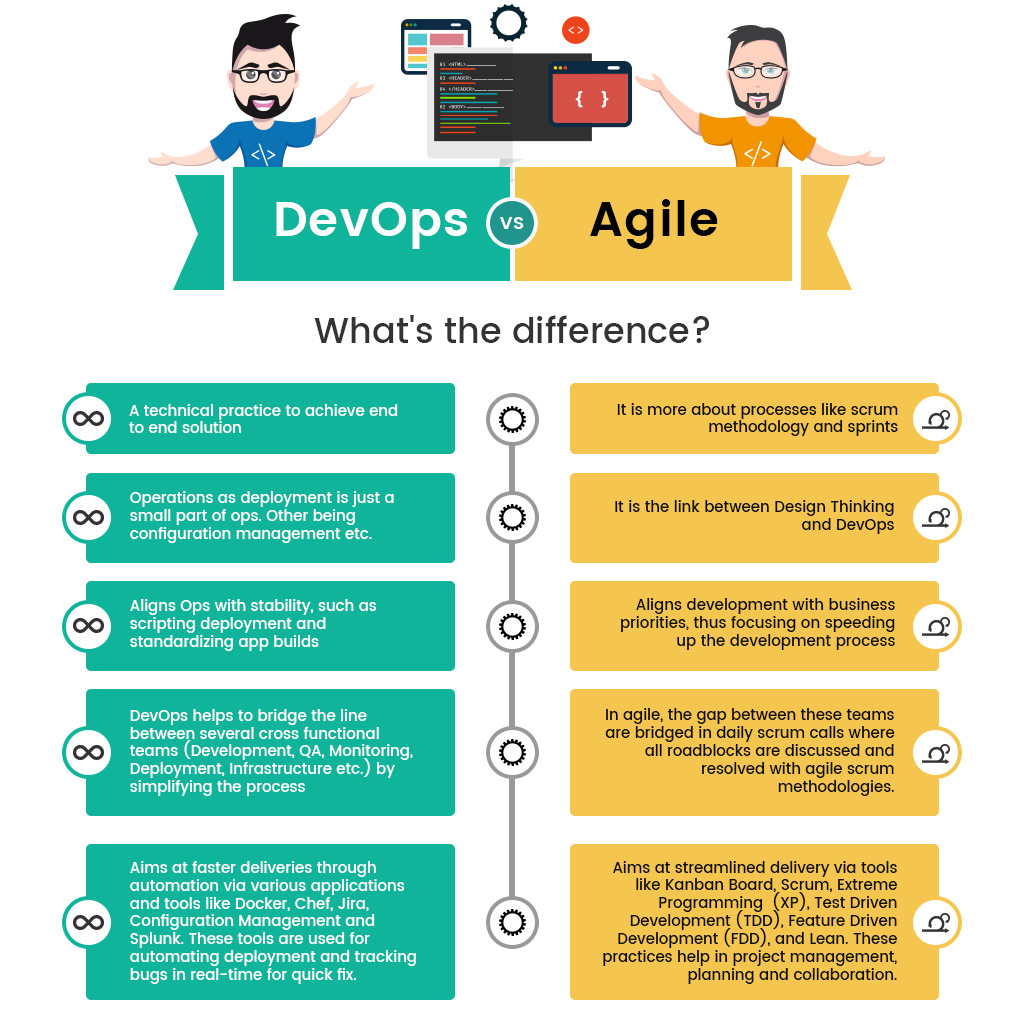Software development processes such as DevOps and Agile are well-known. And they are employed in many different industries. It is clear that many firms are keen to put these techniques into practice. Both take a different strategy, use distinct organizational structures, and employ separate teams. Despite its widespread use, there is still some misunderstanding. About how DevOps differs from Agile development. We will discuss what DevOps and Agile are and how they vary from one another in this blog post on DevOps and Agile comparison.
Product development processes are improved by continuous iteration cycles. That incorporate product testing, according to the Agile methodology. It facilitates the development of an environment that is iterative and gradual. When you go through iteration, you are breaking down the whole development process into smaller, more manageable portions, which allows the process to improve over time.Sprintzeal
According to the Agile Manifesto, there are 12 defining principles that should follow in order to create teams that produce better products in a shorter period of time. Customers’ happiness and the ability of teams to adjust to changing circumstances are stressing these ideas or ideals. It also emphasizes the need for frequent product delivery, which can only be accomplish. If all teams interact and communicate with one another on a regular and face-to-face basis.
Working software is seen as the most essential, independent of the documentation. And the primary emphasis of developing working software should on outstanding design and technical excellence, given in a straightforward manner. Another aspect of the Agile approach is upon soliciting input and adapting the product in response to the feedback, which is believe in the most effective technique of delivering a successful product to the customer.
The fundamental ideals of Agile place a greater emphasis on relationships and team members .than they do on the technologies and procedures that are utilize while building a product. It also highlights the need of developing a functional program in conjunction. with other teams and taking consumer input into consideration. Which may be accomplish that flexible and adapting to changes rather than remaining inflexible and following preconceived plans.
DevOps is a method of collaborating on software development projects with other teams. Improved communication and cooperation among team members. As well as integration, are other important objectives for reducing product release times. When compared to conventional software development approaches, 63 percent of teams who apply. The DevOps methodology for their software development report that the quality of their delivered product has improved.DevOpsCertification
DevOps fosters a culture of cooperation among development teams . With the goal of enhancing product deployment via collaboration between. The development team and the operations team. It contributes to the automation of code deployment. The speeding up of the whole production process, and the alignment of IT teams with operations.
DevOps is concerned with building a collaborative culture inside a business via the use of technology. It enhances the way software is develop and deliver to encourage collaboration between the development and operations teams. All communication holes between the two has closed, and they are able to collaborate without having to operate in silos.
Agile and Lean methodologies are use DevOps teams to establish this kind of work environment in their teams. Similarly, to Agile, it is a mentality that cannot tie to a certain job description or title in order to adhere to this idea. It focuses on continuous deployment and delivery. which is accomplish via the integration of diverse teams within the enterprise. DevOps is based on three fundamental ideas.
Concluding Remarks
It is necessary to have a specific degree of knowledge and competence in order to implement Agile and DevOps. It is necessary for teams teachs in Agile and DevOps procedures in order to get maximum value from the approaches. Training and coaching are critical components of successful implementation. Because they help to establish a culture and mentality across the business.








